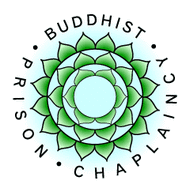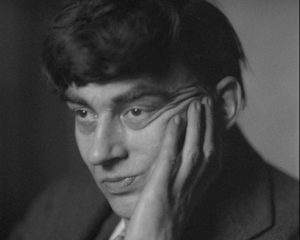
Throughout history, women who have studied esoteric arts, tantra, or the occult; Druidism, Kabbalah, Wicca, or even Christian mysticism, have been viewed with suspicion by the everyday citizenry, considered witches interested in black magic; or pagans, devoted to an Earth Mother, not a heavenly father. Superstitions abound around the role and existence of women who possess energetic powers, or a deep connection to wild Nature, or who are comfortable moving between dimensions of awareness. Buddhism—Tantric Buddhism in particular—emphasizes female agency in mystical action, in the meditations of visualized dakinis who assist in concentration and in sustaining enlightened experience. They dance in circles, move between dimensions of existence, change color, and sometime fly. Dakinis are frequently depicted in Vajrayana Buddhist art, and function within many specific Buddhist meditation techniques. The art is designed to instruct and to convey teaching.

I have the great pleasure here to introduce four extraordinary women who have dedicated significant portions of their lives to learning and mastering female empowerment traditions, including Wicca, Kabbalah, tantric meditation, spirit-mediumship, channeling, authentic movement, Daoist internal alchemy, Tibetan dakini dance, Newar Charya Nritya, Buddhist cham, ritual trance, Buddhist chöd, Shinto Miko-mai, modern dance, and witchcraft. One is a healer: a highly regarded herbalist and a structural therapist. Another is a dance critic in New York City. One is a Buddhist scholar with specialized experience in Japanese esoteric practice, and another a dancer who makes films. Three of them would admit gleefully that they are witches, and have a genuine interest in the history and practice of witchcraft, while the one from Manhattan states plainly: “Everything I’ve done is driven by dance curiosity.”
I will introduce two of them here today, and two of them next month. Today, here are Lindsay Gilmour and Karen Greenspan.

Lindsay Gilmour
Lindsay is a professor of dance at the University of California, Irvine (UCI). She has been awarded a Fulbright fellowship to research the ritual dance of Vajrayana monks and nuns in India. She has also been awarded the prestigious Hellman Fellowship at UCI, which she is using to complete a three-film series about monastic dance and meditation in Ladakh and Himachal Pradesh. Her research—and correspondingly her three films—explore innovation, adaptation, and preservation in the continuity of these long-transmitted dances.
Lindsay’s approach is based on the concept and experience of embodied knowledge, somatic understanding, and something now known as the Discipline of Authentic Movement. This work emphasizes offering from a conscious body, aware of an inherent order unfolding in an organic way. Lindsay has made connections between contemporary dance practice and the sacred dances of Buddhism. In an interview with a university colleague, Lindsay explained her work this way:
“I’m researching embodiment and ways of knowing through the body. The two projects that are at the forefront of my research are Tibetan ritual dance and eco-somatic movement practices. For both practices the body itself is the subject of experience and the very place of knowing. I’m interested in shifting the hierarchy of perception and how we gather information and construct knowledge. I am interested in the interplay of what we call “mind” and “body” and how movements and environments affect the mind, and vice versa. I would like to describe my filmmaking as more visceral embodied approach to knowing and experiencing a place through the senses of the body versus an analytical knowing about a place that favors thinking.
“During ritual dance or performing mudras, hand gestures, the dancers, who are monks or nuns, visualize themselves as the deity, speak mantras and move their body—they say, through the three doors of the body, speech, and mind. What fascinates me is that the gestures and words don’t represent something. They are the thing itself. The sacred mantras don’t mean something. The mantras are the vibration of the deity. This gets to the idea of direct experience, direct relationship with the landscape and direct experience or embodiment of a deity.”

“The through line between my research is embodied epistemology. How do we know what we know? What if we allow the body to speak and listen? What does my body know? What does my body know when I sit in a Tibetan temple for three hours, during afternoon prayers? What does my body know when I’m sitting in a monastery courtyard watching ritual dance? What does my body know when I sit with a coyote, slug, or tree? My research tool, in some ways, is my body and my own perception. Of course, I read about my research topics, but what interests me is what happens when I let information filter in through my kinesthetic intelligence. What happens when I shift my hierarchy of knowing? I think people are understanding the need for alternative ways of being in the world.”
(UCI Claire Trevor School of the Arts)
Making a case for the wildness within, and a direct embodied experience of an open, wild lot adjacent her housing complex during COVID lockdown, Lindsay made a film with the brilliant cinematographer Nathan Whitmont about a woman coming to embrace her own wild communion, Suburban Wilderness. It is a delightful and profound short film, an inspiration for women, and others, to awaken their powers through embodied awareness. Lindsay’s films of nuns, monks, and dancers will be offered in a public course, “Spirit Embodied: Himalayan Dance on Film,” presented by Yangchenma Arts & Music in October. Stay tuned.
Karen Greenspan
Karen is a New York-based dancer, dance critic, and researcher. Her forays into the esoteric dancer practices of the Himalayas are unique and rare. Not only has she learned the Newar dance-as-mediation practice of Charya Nritya, studying with the world’s foremost teacher, Prajwal Vajracharya, she has danced the Vajrayogini Charya dance at the ancient Itum Bahal Temple in the Kathmandu Valley—certainly among the first foreign woman to do any such thing. Locals, who have their own evolving relationship with their indigenous mysticism, nevertheless marveled to see this almost shocking scene, an unthinkable historical phenomenon. It was in the 1980s that Prajwal’s father instructed him to take the hitherto-secret tradition to the world. In a matter of decades, foreign students have returned to Nepal to dance at sacred sites. Karen danced at the same site where, according to Nepalese legend, Padmasambhava, the founder of Tibetan Buddhism, learned Charya dances from the Master of Vajrayogini practice, Vidyadhara Humkara.
Charya Nritya is a surviving example of a very ancient mystical practice of dance as meditation. Karen was emphatic with me that she does not have a fascination with female empowerment traditions, or esoteric meditation, but rather dance curiosity has driven her all her life and does so to this day. She told a prescient story. When she was 11 years old, she had a birthday slumber party, and everyone in her apartment complex knew: if you went to Karen’s party, you would have to do folk dances. Please enjoy this great photo of Karen’s 11th birthday party. I can’t help but smile. While she disavows a bent toward female power traditions, she did possess an uncanny ability for an 11-year-old girl to compel other children to do circle dances. . . . That sounds like a budding faery to me. This is precisely what Padmasambhava did at Samye to establish Buddhism in Tibet: he mesmerized local demons into a circle dance. It’s interesting, too, that Buddhist dance festivals dedicated to Guru Rinpoche, called tsechu, with their circle dances of supernatural beings, take place on the full moon, just like their faery circle counterparts.

Karen explained: “The meditation, the esoteric context, of course I learn it; it comes with the territory of the dance. Without it, how could I learn the dance? I had a realization moment when I returned from this last pilgrimage experience to study chöd cham in Bhutan: you know who the guru is? Dance. Dance is the guru. I’ve never really fallen into the whole guru-initiation thing. I’m driven by a pure and concentrated, lifelong dance curiosity. If I stay authentic to that, I am always where I should be.
“Here we have a spiritual tradition that integrates dance, OK? What can that dance teach me? The spiritual tradition is the dance. What can that dance teach me about my mind? What does the dance open up for me in terms of experience? The only way to get it is by doing it. Then, you investigate your experience of that. Like anything else, meditation, playing the piano, chöd cham—you decide to practice 45 minutes every day. Then over time, you make personal sense of it.”
Karen’s practical response reminded me of the two monks at Matho Monastery who were the former and current trance oracles. They were masters of the Vajradhatu meditation practice, which we were actively exploring at that time. When we asked them for their thoughts, they were deeply appreciative of our project, but added: “You are still trying to learn it. Your project is more about learning it, than the experience of it. We’ve been doing it for 30 years. Ask us!” Of course we did, and the oracles were a great addition to our work.
Beyond her experiences with Charya Nritya, Karen is involved with the Tara Mandala global sangha founded by Lama Tsultrim Allione in the US, who practice authentic chöd meditation and a rare chöd cham group dance—a Tibetan lineage tradition surviving in a remote Bhutanese enclave and directly connected to the legendary 11th century female mystic and master of chöd, Machig Labdrön. Recordings were made of initiated exponents demonstrating the sequences of the dance. Teachings were shared about the meaning and execution of the dances. Music and mantra were learned. The international team split into dedicated sub-groups to master these three aspects. This “international documentation retreat” concluded with a performance of the ritual chöd cham performed by the lay community for the benefit of visiting practitioners from Tara Mandala. What a sublime experience! This is an act of dancers helping each other. It is what dancers do; they know best.
There’s more: Karen was rather organically appointed to be in charge of dance research at the Bhutanese monastery during the pilgrimage in order to learn the complete ritual, dance, mantra, and mudra. When this exalted enclave came to a close, all eyes turned to her: could she produce a chams yig, a dance manual, for this mystical dance lineage? A chams yig is the written mnemonic device that aids a transmitted dance tradition in order to remember its steps, sequences, and mental actions. Unbelievably, she is halfway done! She teaches the dance to seven members of the group that traveled to Bhutan, reviewing her descriptions and instructions, and as importantly, corresponding to video clips of dance demonstration.
It has been projected by some high lamas that within 25 years, all monasteries will rely on digital records—videos, photos, and text—to preserve and remember the full canon of rituals. Karen could well be on her way to producing the world’s first digital chams yig, or instruction manual for Vajrayana yogic dance. Not bad for a girl who followed her “dance genie.” She is responsible for this generation’s transmission of an ancient powerful dance yoga. Chöd is about the dismemberment of the psyche into the void. She has a mighty responsibility that she takes on with grace, confident in her own dance curiosity and her guru, Dance.

“It’s amazing that these Indian, Nepalese, and Tibetan dances exist! That is number one; the Charya dances I have learned are solo dances, making the experience personal by nature,” Karen explained. “It’s a privilege to have these choices of dances and teaching. I am increasingly realizing that Newar Charya Nritya is really, truly, a choreographic and philosophic link between Indian dance and Tibetan cham. I am familiar with these traditions. What I learned from the dances themselves is so much richer than anything I learned in a text. What I learn from dancing continues to teach me.”
Karen has also detailed her earlier experiences at Nagi Monastery in Nepal with nuns who practice a different chöd cham lineage (and so, a different dance) in a recent article for BDG.* Her account of her experiences with the chöd cham in Bhutan will be published by BDG later in August. Stay tuned.
Karen’s observations bring some practical concurrence to the mythic figure of Guru Rinpoche (Padmasmabhava), whose character and legends link the dances and the mysticism of northern India, Nepal, and Tibet. This legendary embrace of all these places, times, meditation techniques, and dance styles is not accidental. It may even be historically true, once the full range of histories—not only the dominant histories of China, India, and Tibet, but the local histories of the Swat Valley, the Kathmandu Valley, and Bhutan—are also respected and contribute to a fuller understanding of the evolution of mystical dance in the Himalayas.

Coming next month: introducing Druid priestess Althea Northage-Orr and researcher of esoteric traditions in Japan, Elizabeth Tinsley.
* The Chöd Cham of Nagi Gompa: An Alchemy of Radical Courage and Compassion (BDG)
See more
Core of Culture
Dance: Embodiment and Empathy with Lindsay Gilmour (UCI Claire Trevor School of the Arts)
Karen Greenspan
Related features from BDG
Faeries, Dakinis, Nuns, and Mikos, Part One
Faeries, Dakinis, Nuns, and Mikos, Part Three













